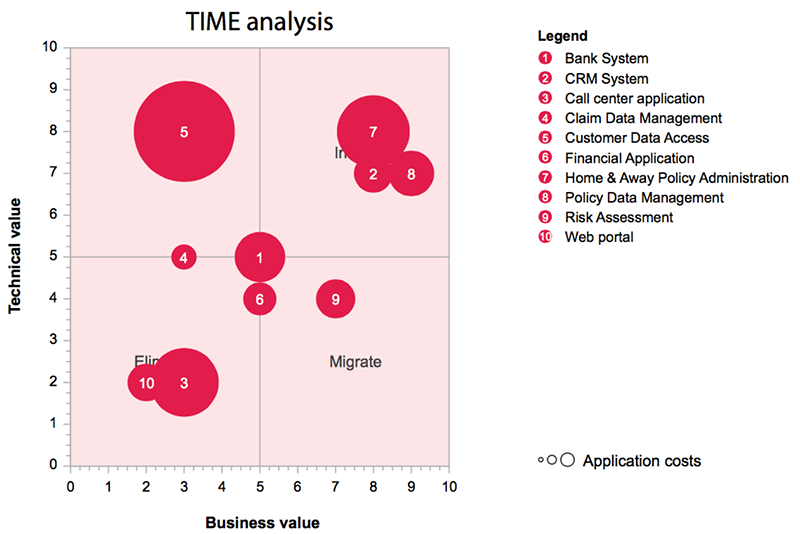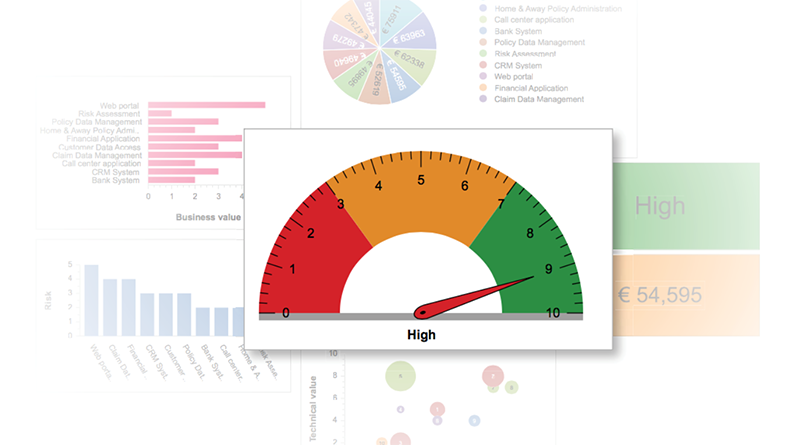In many organizations a mythical creature lays deep down in the catacombs, otherwise known as the server rooms. This dark monster has an obsessive-compulsive disorder. Normally these creatures are in search of gold. However, this kind doesn’t fancy gold, this one hoards applications!

Smaug: Hoard
How did it come to this? Well, over the years the financial sector has seen many mergers, acquisitions and joint ventures. Often, these joint forces still act like separate businesses but serve the same customers. These different business operations functioning under a single umbrella has allowed the application-hoarding dragon to creep in. Similar to the dragon Smaug in Tolkien’s “The Hobbit”, where the giant amount of gold attracts Smaug who then expels the dwarves from their home.
Application hoarding in the financial sector has more causes than just mergers and take-overs. It is not uncommon that the product lifecycle of financial services exceeds the lifecycle for applications. Take for example a pension fund, which provides its services over many decades. The challenge is to maintain such a service or product while replacing applications. Consequently, we see this huge jungle of monolithic application landscapes of “tepuis” (the table mountains of the South-American jungle) that act as separate (mini) ecosystems that are completely isolated from the rainforest below.

UP!: Tepuis
You do not want to integrate these tepuis with the rest of your business, right? No, in the ideal situation you want to get rid of these monstrous mountains that make your application landscape so hard to manage. In order to do this, you need to develop and execute an application strategy that rationalizes your legacy portfolio and at the same time prepares it for fast-emerging business requirements and new technologies.
One way to get a grip on your application landscape is to do a major one-time overhaul, thereby risking to attract the application hoarding dragon yet again. Another option is that you stop building your own applications and instead deploy a platform that enables modular applications to interact with each other. Simply buy the applications (or hire them as a service) and integrate them into the platform.
In practice, a combination of approaches is required, and a continuous process for maintaining the health of your application landscape needs to be implemented. In doing so, APM will help you decide which legacy applications you can eliminate (call it a good spring clean), which applications you have to keep but migrate to new technology, and which applications are a good investment to support your business strategy.
So why use APM? First, you can make well-founded decisions based on value aspects, risks and costs. Visualized information enables clear communication and helps to align strategy with business operations and IT. An example is the bubble chart below, which shows the business value, technical value and cost of applications, and provides a lifecycle advice for each of them.

APM Time Analysis
Second, managing a large application landscape by grouping these applications in portfolios helps you to deal with the sometimes overwhelming number of assets to be managed. Different portfolios serve different goals and can be evaluated using different metrics. A common approach to this is Gartner’s Pace Layering, which groups applications in systems of record, systems of differentiation and systems of innovation, each with their own investment criteria, development processes and pace of change. By allocating budgets at the portfolio level, you can also avoid the common ‘innovation squeeze’, where maintaining the legacy landscape eats up all of budget and nothing is left for innovation.
This approach results in a less complex application landscape with improved IT fitness and agility and reduced operational costs. In the end you will be much more capable in managing change and transforming your business.

Integration of APM with EA
A successful APM approach requires integration with Enterprise Architecture (EA). As EA considers all domains that make up the organization, it can be used to provide the necessary insights on all the relevant parts of the enterprise for effective application portfolio management. Applications depend on each other and cannot be managed in isolation. EA helps you uncover these dependencies and decide on a feasible roadmap for change.
Enterprise Studio (BES) supports both the visualization of different value aspects of applications and the design and analysis of your enterprise architecture. This combination enables portfolio managers and enterprise architects to create portfolios, value assessments and dashboards that provide decision makers with actionable information to move the organization in the right direction.
To learn more about APM you can download a free e-book below. If you are already familiar with APM, the e-book may still provide you with some interesting insights and best practices (for example BiZZdesign’s House of APM). So if you want to slay that nasty application-hoarding dragon in your organization, you better start developing an APM capability today and take control of your business transformation!